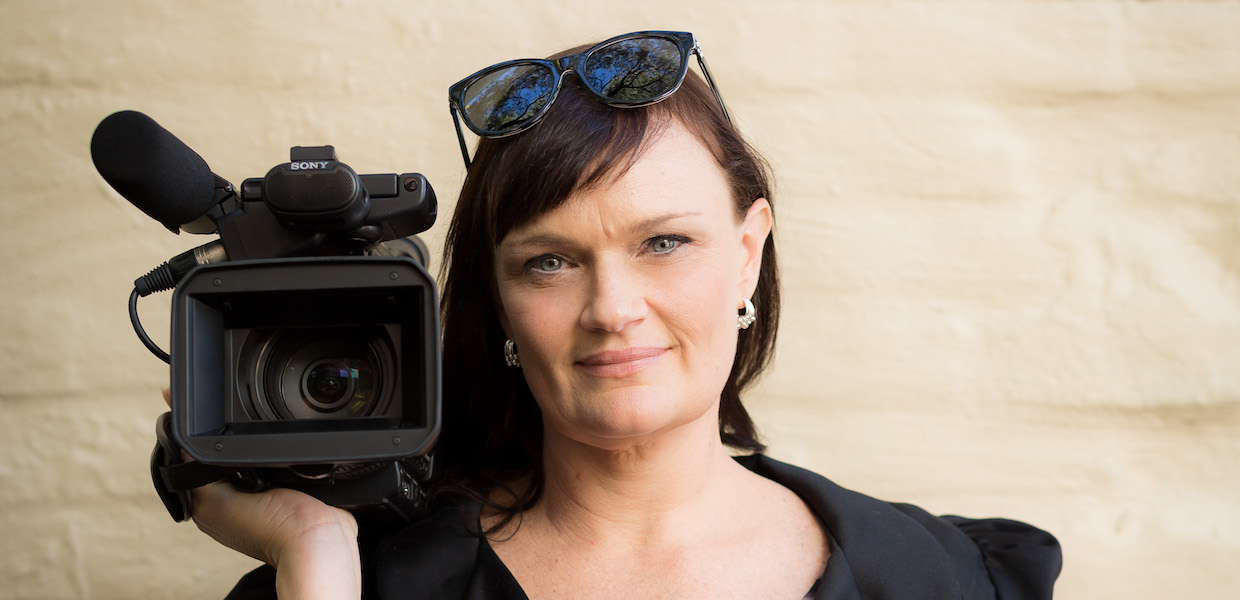The Value of Creative Industries by Monica Davidson
I have always been immersed in the value of creative practice. Both of my parents were artists, and there was no question in my household that art and music and words were things to be valued and cherished. I don’t recall ever discussing the financial value of creativity – that didn’t matter, as long as I found my own artistic voice and learned how to use it. It was an unusual household and one I’m very grateful for.
Later in my life, as an emerging writer and filmmaker, I realised that my parents had been shielding me from the important conversation about financial value and creative practice. Rent had to be paid, mouths fed, and I needed to make my practice pay my bills. I had to find out how to gain economic value from my craft, and not just creative and cultural worth. I was eventually successful, after much failure, trial and error, and a real-world schooling in the basics of small business.
Now I spend all of my time discussing the value of creative practice, from a business perspective. It was a popular topic a few years ago, largely due to the National Cultural Policy released in 2013 and the work of the Creative Industries Innovation Centre (CIIC) from 2009 to 2014. The Creative Australia policy document declared the goal of connecting creativity to national life “for a social and economic dividend”[1], and the CIIC found that the creative workforce represented 6.2% of total Australian employment[2] and contributed $90 billion to our economy.
Defining us as an industry was a startling and welcome way of looking at the value of creative and cultural work, and the importance of those of us actually doing the job. We could suddenly speak beyond the ephemeral value of creative practice, and add the shiny practical value of economic contribution and jobs creation. The definition and expression of value described by the words ‘creative industry’ took the aristocratic sting out of high art practice and framed it for what it was – the inherent and intrinsic worth of a brilliant novel, a catchy song, a well-designed logo, a stirring piece of sculpture or a night out at the movies.
This was especially welcome since there had always been a divide in the way our professional contribution was valued compared to the products and services offered by other workers, particularly highly trained specialists such as we creatives are. Any artist or filmmaker or musician can tell you of the multiple times they have been asked when they’re going to get a ‘real job’, or what their backup plan was when they finished their arts degree. The term ‘creative industry’ joined the hard language of money with the soft impact of art so that we could be seen as whole, necessary and treasured contributors to Australian society.
Now, it’s end of the decade and creative industry no longer receives the attention it once did, despite the fact that cultural and creative activity contributed $111.7 billion to Australia’s economy in 2016-17[3], and that growth in creative employment is nearly twice that of the Australian workforce in general[4].
Creative industries have also been identified by the Regional Australia Institute (RAI) as an area poised for significant potential contribution to growth. The Regional Growth Prospects Report (June 2019) provided significant evidence that creative industries play a vital role in local innovation and liveability in regional Australia, which may include attracting and/or retaining population and contributing to tourism[5].
Despite all our progress, there is still a nasty tendency in Australia to gauge the individual value of a creative practitioner’s work by how much money they make from their craft. This is especially cruel and ironic given that (1) as an industry we are clearly pulling our weight, and (2) many people have no idea how much money flows through the creative economy. This definition of worth is informed by the received wisdom that creativity isn’t a job, and artists must be starving.
An artist is as artist because they make art – not because they make money. A writer is entitled to that label because they write, and a filmmaker because they produce screen content. Whether or not they are generating a profit should be irrelevant, as it is for other types of small business. I don’t demand to see the balance sheet of my local café before I agree to buy a coffee. The ‘realness’ of their business is apparent in the production of the coffee, not in their profit and loss statement. A farmer is still perceived as being part of the agricultural economy, even if their individual farm is in trouble.
Acknowledging the importance of creative industry, for both its cultural and commercial value, is vital. Offering respect to creative practitioners is long overdue. Our economy, especially in the regions, may just depend on it.
[1] Office for the Arts (Australia) (2013). Creative Australia: national cultural policy. Retrieved from Analysis and Policy Observatory Website: https://apo.org.au/node/33126
[2] Andersen, L., Ashton, P., & Colley, L. (2015). Creative Business in Australia: Learnings from the Creative Industries Innovation Centre, 2009 to 2015. Sydney: UTS ePRESS.
[3] https://www.communications.gov.au/departmental-news/economic-value-cultural-and-creative-activity
[4] https://research.qut.edu.au/dmrc/wp-content/uploads/sites/5/2018/03/Factsheet-1-Creative-Employment-overview-V5.pdf
[5] Achurch H. (2019) Regional Growth Prospects: Strategic Investment in Food Processing, Tourism, Advanced Manufacturing and Creative Industries. Canberra, The Regional Australia Institute.
Monica Davidson is the doyenne of Creative Plus Business and guest writer in our latest ‘Soapbox’ newsletter for all things arts + culture!


